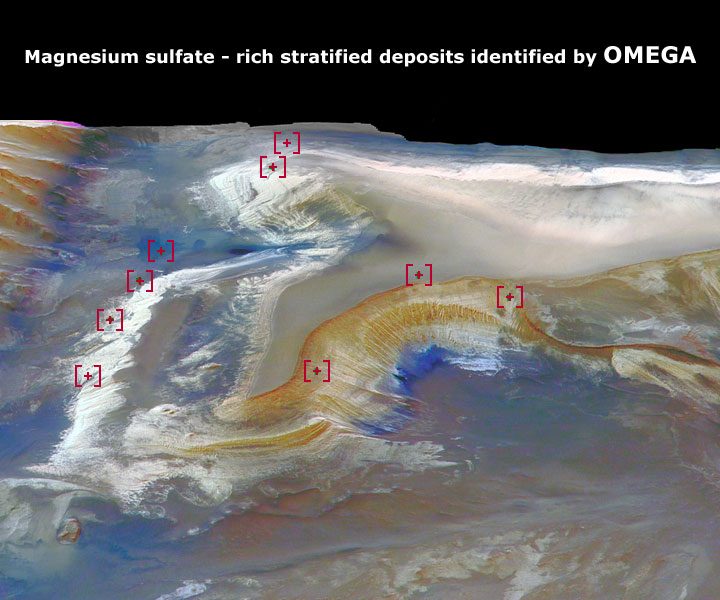Water on Mars – but not a drop to drink
05 December 2005
The surface of Mars is now as dry as a desert, but new results from ESA’s Mars Express confirm that water has played an important role in the planet’s history. The spacecraft’s sensitive instruments confirm that the arid Red Planet was once much wetter, and that water ice is probably widespread beneath the surface.
Over a few weeks last summer, the orbiter’s radar instrument transmitted radio signals that passed through the surface and were reflected back by underground layers. Analysis of these echoes has revealed curved structures that may be the outer rims of buried impact basins.
One almost circular structure, about 250 km across, lies 1.5 to 2.5 km beneath the northern lowlands of the Chryse Planitia region. Scientists believe it may contain a thick layer of water-ice-rich material. Closer to the Martian north pole, strong echoes indicate the presence of a nearly pure layer of water ice, more than 1 km thick, lying above a layer of volcanic “soil”.
The MARSIS radar has also been used to study the upper part of the atmosphere - the ionosphere. The echoes show a strong link between the behaviour of electrified gas in this region and areas of strong magnetism in the planet’s solid crust.
Another instrument, known as OMEGA, has detected rock minerals that have been changed by liquid water. These ‘hydrated’ minerals prove that large amounts of water existed on Mars billions of years ago – and that conditions may then have been suitable for life to begin.






